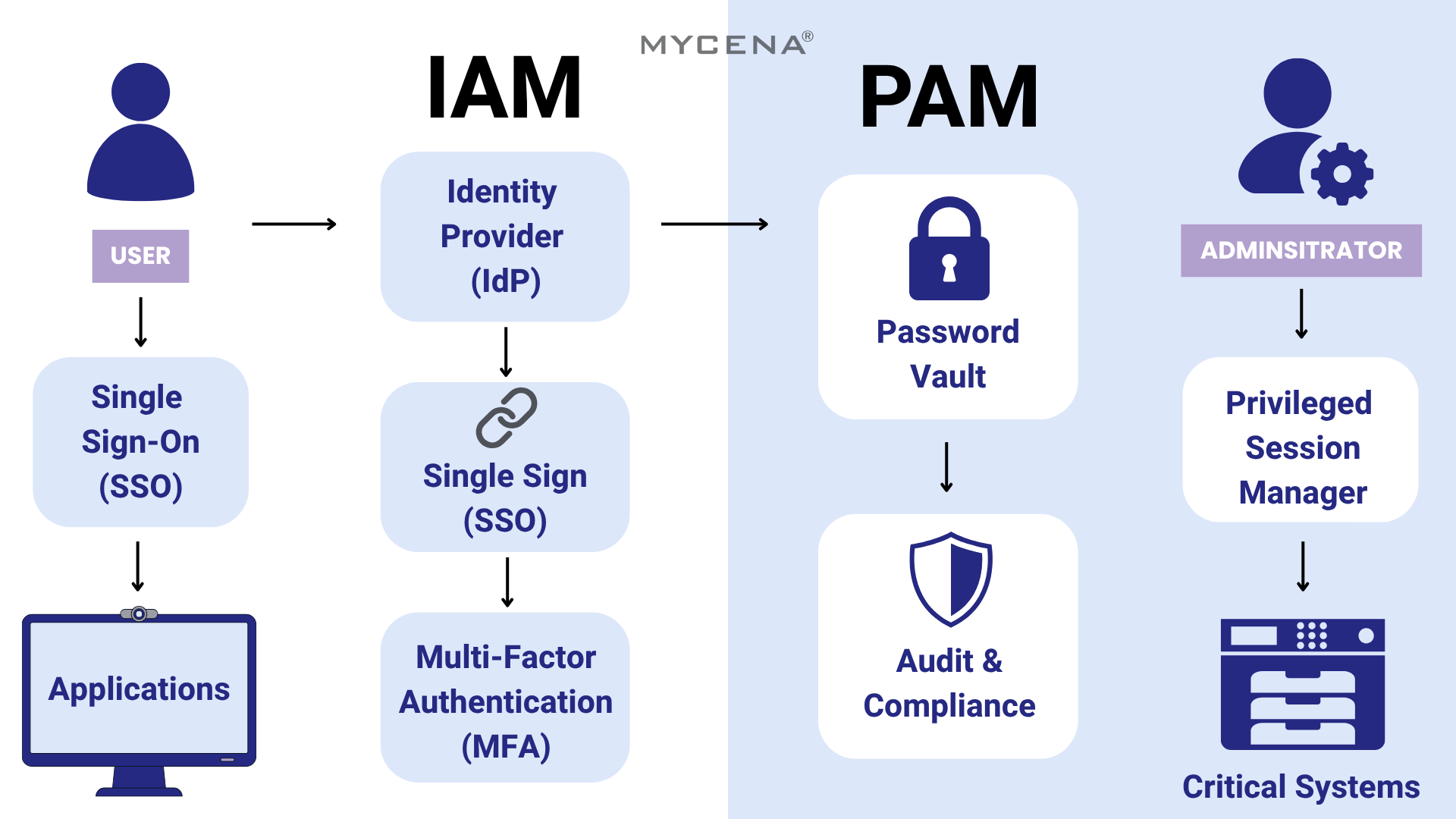Explore expert insights, product updates, industry trends, and the latest announcements on our blog — your go-to source for staying informed and inspired.

Explore expert insights, product updates, industry trends, and the latest announcements on our blog — your go-to source for staying informed and inspired.


In today's digital landscape, managing access isn't just an IT task—it's a critical line of defense. Two terms often thrown around in the cybersecurity world are IAM (Identity Access Management) and PAM (Privileged Access Management) . They sound similar, and they are related—but mixing them up could leave your systems exposed in ways you didn't expect.
Let's break them down and explain how each plays a unique (and essential) role in keeping your organization secure.
Identity and Access Management (IAM) is the foundational layer of digital access control. It's like the front desk of your digital office—checking who each person is and what they're allowed to do.
IAM ensures that every user , whether it's an employee, customer, contractor, or partner, has the right level of access to the right resources —nothing more, nothing less.
IAM systems handle:
Popular IAM tools: Okta, Microsoft Entra ID (formerly Azure AD), Auth0
Think of IAM as the digital ID badge and access gate for everyone in your ecosystem.
While IAM is about everyone , Privileged Access Management (PAM) is about the few — the users who hold the digital master keys.
PAM is a specialized subset of IAM focused on securing privileged accounts , such as system administrators, DevOps engineers, and IT staff. These accounts can access your most critical infrastructure, and if compromised, they can cause catastrophic damage.
PAM solutions are designed to:
Popular PAM tools: CyberArk, BeyondTrust, Delinea (formerly Thycotic)
Where IAM manages the front door for everyone, PAM secures the keys to the server room.
| Feature | IAM | PAM |
|---|---|---|
| Who it covers | All users (staff, partners, customers) | Privileged users (admins, IT, DevOps) |
| Main goal | Manage user identities and general access | Protect and monitor high-risk access |
| Focus | Authentication & role-based access | Secure credential vaulting & session control |
| Use case | Needed by all organizations | Critical for sensitive or regulated systems |
Relying on IAM without PAM is like having a well-guarded office lobby but no lock on the server room. Conversely, using PAM without IAM would be like locking up the IT admin while leaving the rest of the building open.
For a robust access security strategy, you need both IAM and PAM working together :
As cyber threats grow more advanced—especially with phishing, insider risks, and AI-driven attacks—relying solely on traditional identity or access tools leaves gaps. IAM and PAM are essential pieces of the security puzzle, but they still depend on one vulnerable element: human-managed credentials.
MyCena® takes IAM and PAM a step further by removing the weakest link in the chain, passwords. With encrypted, automated credential management, MyCena® ensures employees never create, see, or share credentials. That makes phishing irrelevant, access segmented, and compliance a breeze.
By complementing your IAM and PAM strategies, MyCena® helps eliminate credential-based attacks entirely , simplifying governance while boosting your organization's resilience and efficiency.